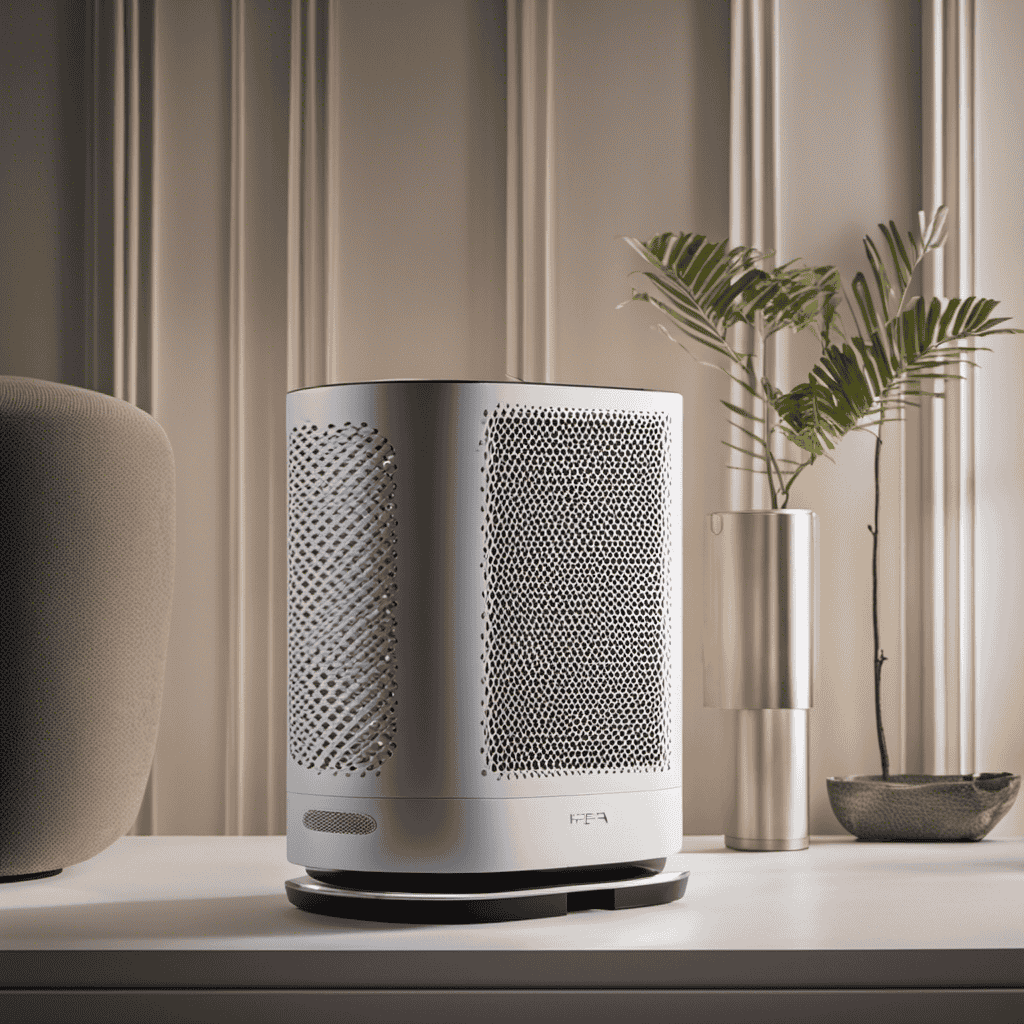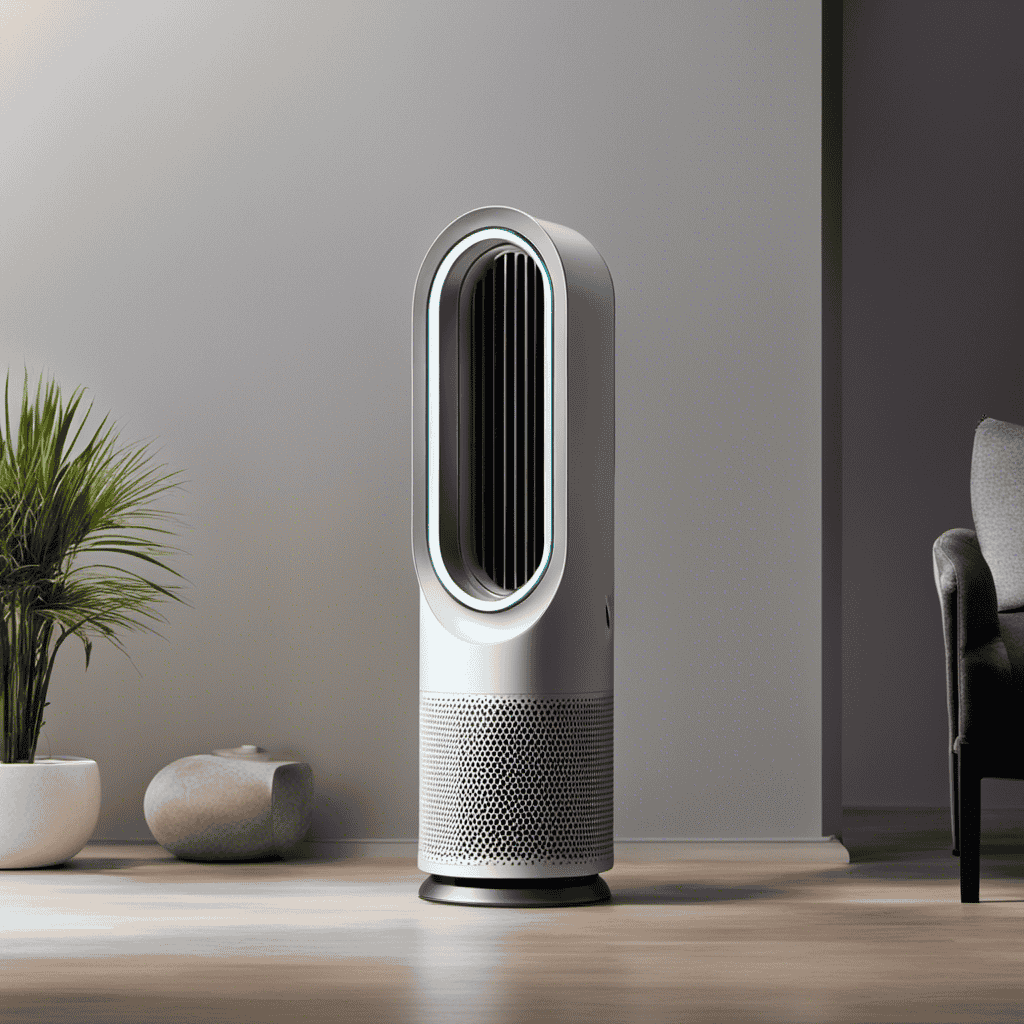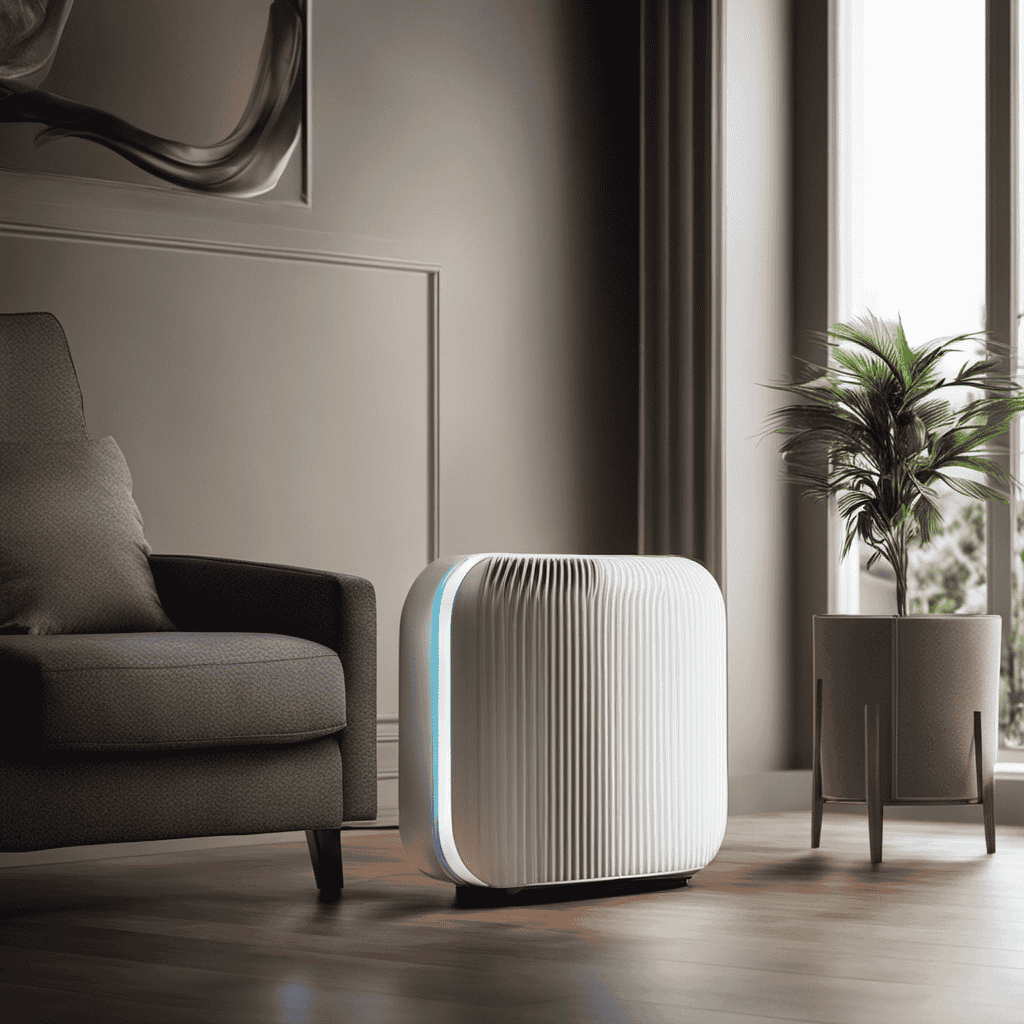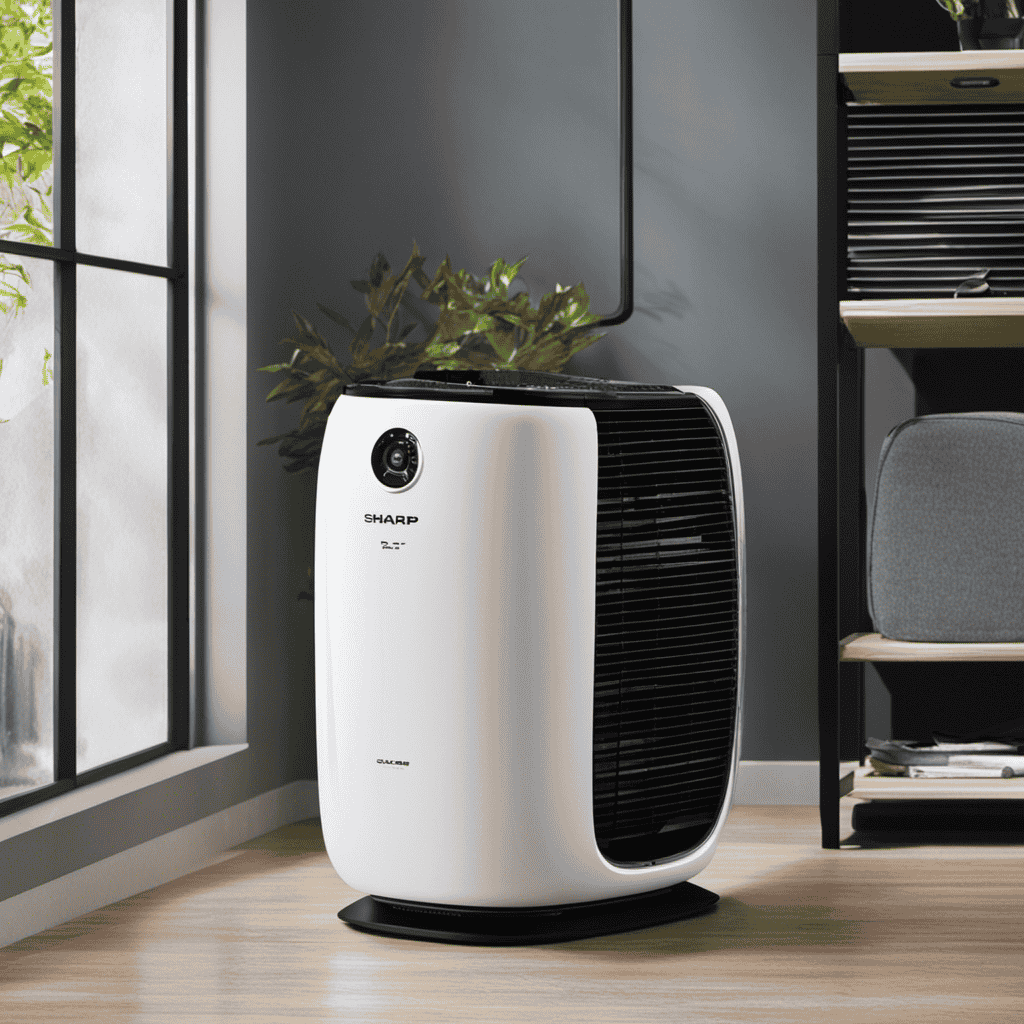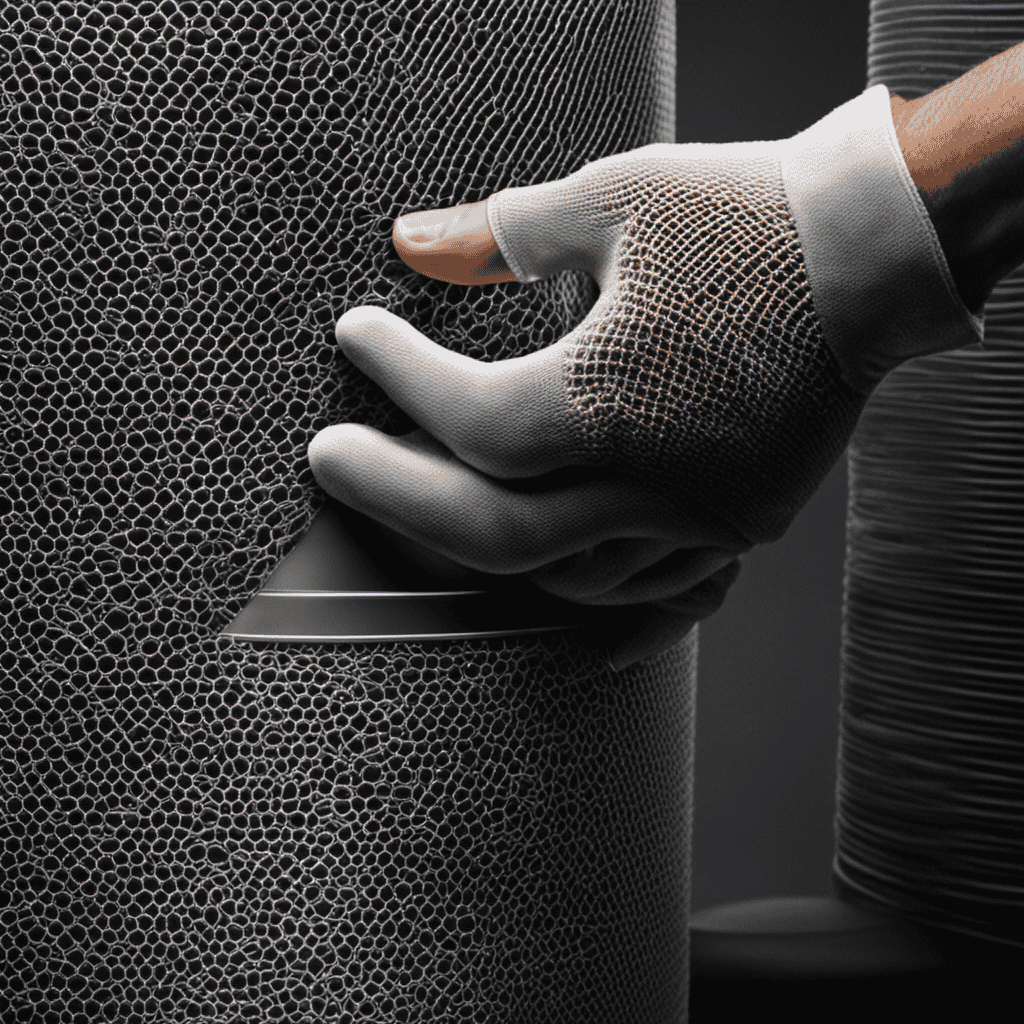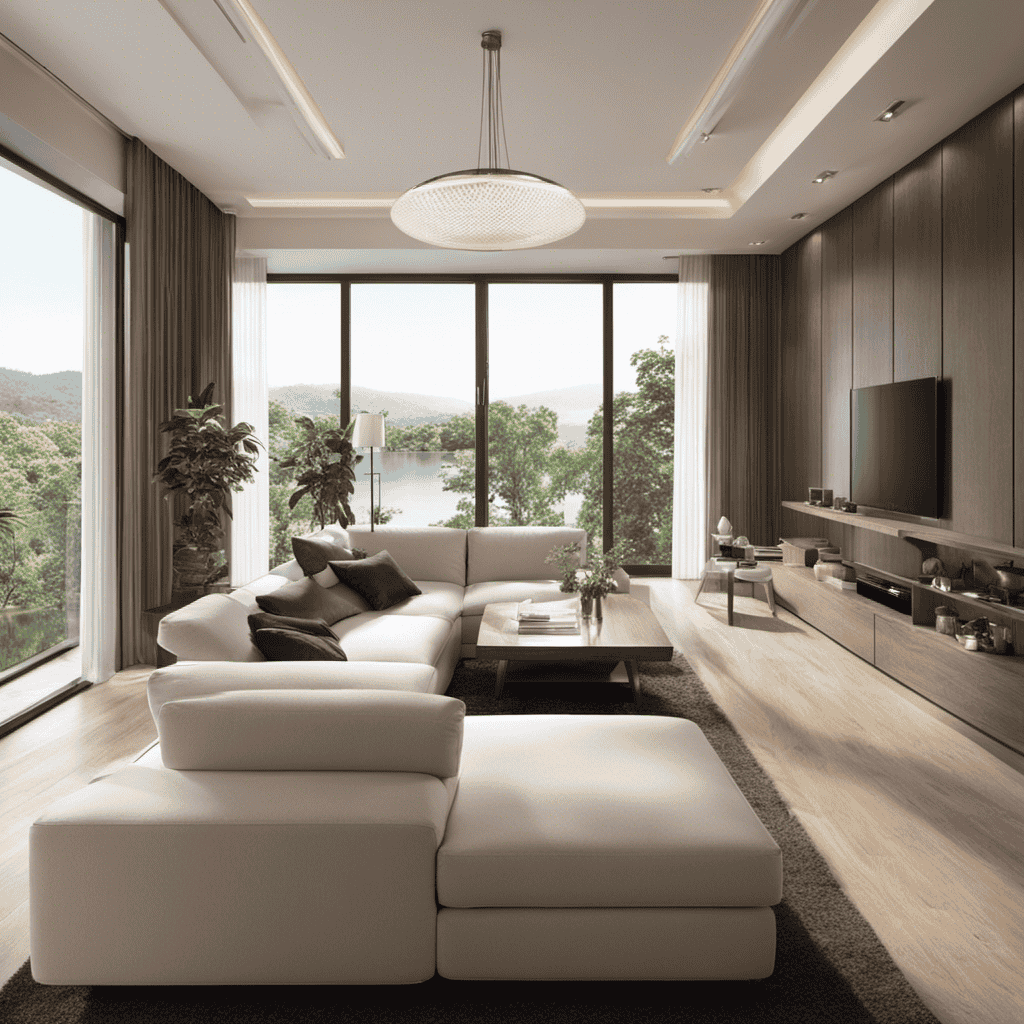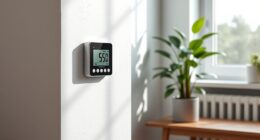Ever curious about what really defines a Hepa-Type air purifier? Allow me to explain it to you in detail.
In this article, I’ll delve into the science behind Hepa-Type air purifiers, explain the workings of the Hepa filter, highlight key features, discuss the benefits of using one, and provide tips for choosing the right one.
So, if you’re curious about improving the air quality in your home or office, keep reading to discover the wonders of Hepa-Type air purifiers.
Key Takeaways
- Hepa-type air purifiers use a filter that traps small particles like pollen and dust.
- The filter consists of a dense mesh of fibers that create a labyrinth-like path for air to pass through.
- Hepa filters are designed to capture airborne particles as small as 0.3 microns with an efficiency of 99.97%.
- Hepa-type air purifiers greatly improve air quality by reducing harmful particles and allergens.
The Science Behind Hepa-Type Air Purifiers
If you want to understand how hepa-type air purifiers work, you should know that they use a filter that traps small particles like pollen and dust. These airborne pollutants are major contributors to poor indoor air quality, which can lead to various health issues such as allergies and respiratory problems.
Hepa-type air purifiers are designed to improve indoor air quality by effectively capturing these particles. The filter consists of a dense mesh of fibers that create a labyrinth-like path, forcing air to pass through it. As the air flows through the filter, the small particles get trapped within the fibers, allowing only clean air to pass through.
This filtration process ensures that the air we breathe is free from harmful pollutants. Now, let’s dive deeper into understanding the hepa filter and its significance in air purification.
Understanding the Hepa Filter
To understand the filter, you should know that it traps small particles in the air.
Hepa filters, short for High-Efficiency Particulate Air filters, are designed to capture airborne particles as small as 0.3 microns with an efficiency of 99.97%.
The construction of a hepa filter plays a crucial role in its effectiveness. It consists of a fibrous mat made of randomly arranged fibers, typically composed of fiberglass. These fibers create a maze-like structure that allows air to pass through while capturing particles through mechanisms such as interception, impaction, and diffusion.
The high efficiency of hepa filters is achieved through a combination of these mechanisms. With their intricate construction, hepa filters can effectively remove allergens, dust, pet dander, bacteria, and other harmful particles from the air we breathe.
Understanding the hepa filter’s construction and efficiency is essential to appreciate the key features of hepa-type air purifiers.
Key Features of Hepa-Type Air Purifiers
One of the key features of hepa-type air purifiers is their ability to effectively remove harmful particles from the air we breathe. These purifiers use a high-efficiency particulate air (HEPA) filter to capture and trap particles as small as 0.3 microns, including dust, pollen, pet dander, and mold spores. Regular maintenance is essential to ensure optimal performance and longevity of hepa-type air purifiers. This includes cleaning or replacing the filter regularly, as well as cleaning the exterior and ensuring proper airflow. When comparing hepa-type air purifiers, it is important to consider factors such as the size of the room it can effectively clean, the noise level, and the cost of replacement filters. Additionally, some models may offer additional features like ionizers or UV-C light to further enhance air purification. By understanding these key features and performing regular maintenance, you can ensure that your hepa-type air purifier continues to provide clean and healthy air for you and your family.
| Key Features | Maintenance | Comparison |
|---|---|---|
| HEPA Filter | Clean/Replace | Room Size |
| Particle Removal | Clean Exterior | Noise Level |
| Allergen Control | Ensure Airflow | Cost of Filters |
| Additional Features | Additional Features |
Benefits of Using a Hepa-Type Air Purifier
Using a hepa-type air purifier can greatly improve the air quality in your home, reducing the presence of harmful particles and allergens. Here are four advantages of using a hepa-type air purifier:
-
Effectiveness: Hepa-type filters are highly efficient at capturing small particles as small as 0.3 microns, including dust, pollen, pet dander, and mold spores. This makes them effective in reducing the presence of allergens in the air.
-
Allergy Relief: By removing allergens from the air, hepa-type air purifiers can help alleviate allergy symptoms such as sneezing, coughing, and itchy eyes. They create a cleaner and healthier environment for individuals with allergies.
-
Odor Reduction: Hepa-type air purifiers are equipped with activated carbon filters that can absorb and neutralize odors from cooking, pets, and smoke. This helps to freshen the air and eliminate unpleasant smells.
-
Improved Sleep: With cleaner air, hepa-type air purifiers can create a more serene and soothing environment, promoting better sleep quality. Breathing in clean, filtered air can result in a more restful and rejuvenating sleep experience.
How to Choose the Right Hepa-Type Air Purifier
When choosing the right air purifier for you, consider factors such as room size, filtration efficiency, and noise level. These factors are crucial in ensuring that you choose the best HEPA-type air purifier for your needs.
First, consider the size of the room where you plan to use the air purifier. A smaller room may require a lower capacity purifier, while larger rooms may need a higher capacity one to effectively clean the air.
Next, examine the filtration efficiency. HEPA-type air purifiers are known for their high efficiency in removing airborne particles such as dust, pollen, and pet dander. Look for purifiers that have a high Clean Air Delivery Rate (CADR) and a true HEPA filter.
Lastly, consider the noise level. Some air purifiers can be quite loud, so choose one that operates quietly, especially if you plan to use it in areas such as bedrooms or offices.
Frequently Asked Questions
How Long Does a Hepa-Type Air Purifier Typically Last Before Needing to Be Replaced?
Typically, a hepa-type air purifier lasts for about 1 to 3 years before needing replacement. Signs of a worn-out hepa-type air purifier include decreased efficiency in removing airborne particles and unpleasant odors.
Can a Hepa-Type Air Purifier Help With Allergies Caused by Pet Dander?
Using a hepa-type air purifier can greatly benefit pet owners with allergies caused by pet dander. It effectively filters out airborne allergens, providing relief and creating a healthier indoor environment.
Are Hepa-Type Air Purifiers Effective in Removing Odors From the Air?
Hepa-type air purifiers are effective in reducing indoor pollutants and removing odors from the air. They outperform other types of air purifiers due to their high-efficiency particulate air filters, which capture 99.97% of particles as small as 0.3 microns.
Can a Hepa-Type Air Purifier Remove Harmful Bacteria and Viruses From the Air?
Yes, a hepa-type air purifier can remove harmful bacteria and viruses from the air. It can also help with respiratory illnesses like asthma by filtering mold spores and other allergens.
Do Hepa-Type Air Purifiers Require Any Specific Maintenance or Cleaning?
Maintenance tips and cleaning techniques for hepa-type air purifiers are essential to ensure optimal performance. Regularly replacing the filters and cleaning the unit will help remove airborne particles, providing cleaner and healthier air for your home.
Conclusion
In conclusion, the Hepa-Type air purifier is a powerful tool in improving indoor air quality. By utilizing a specialized Hepa filter, these purifiers effectively capture and remove harmful particles from the air, providing a cleaner and healthier environment.
With features like multiple fan speeds and programmable timers, they offer convenience and customizable options. The benefits of using a Hepa-Type air purifier are numerous, including reducing allergies, asthma symptoms, and improving overall respiratory health.
Remember, ‘An ounce of prevention is worth a pound of cure.’ Choose a Hepa-Type air purifier to safeguard your well-being.
